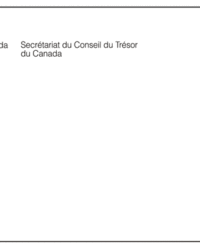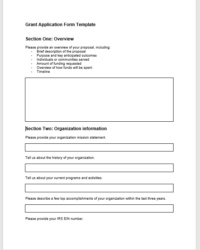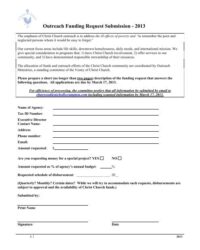Using a pre-defined format increases the likelihood of submitting a comprehensive and competitive proposal. It helps applicants organize their ideas logically and clearly articulate the project’s value proposition. Furthermore, adherence to a standard structure reduces the risk of overlooking critical information required by the funding agency, ultimately saving time and increasing the chances of securing funding.
Understanding the components and purpose of such structured formats is essential for navigating the grant application process successfully. The following sections will delve deeper into the specific elements of a typical application, offering practical guidance and best practices for crafting a compelling and effective submission.
Key Components of a Standard Grant Application Structure
Successful grant applications typically adhere to a structured format, ensuring all essential information is presented clearly and comprehensively. The following components represent the core elements often required by governmental funding agencies.
1. Executive Summary: A concise overview of the project, highlighting its purpose, key objectives, and expected outcomes. This section serves as a brief introduction to capture the reviewer’s attention and provide a compelling rationale for funding.
2. Needs Statement: A clear articulation of the problem or opportunity the project addresses. This section establishes the context for the project and justifies the need for funding by providing evidence of the issue’s significance and impact.
3. Project Description: A detailed explanation of the proposed activities, methodologies, and timelines. This section outlines the project’s implementation plan, demonstrating a clear understanding of the steps required to achieve the stated objectives.
4. Evaluation Plan: A description of the methods and metrics used to assess the project’s progress and impact. This section demonstrates a commitment to accountability and provides a framework for measuring the project’s effectiveness in achieving its goals.
5. Budget Narrative: A detailed justification of the requested funds, outlining how the budget aligns with the project’s activities and objectives. This section provides a clear breakdown of expenses, demonstrating responsible financial planning and resource allocation.
6. Organizational Background: Information about the applicant organization, including its mission, history, and relevant experience. This section establishes the organization’s credibility and capacity to successfully manage the proposed project.
7. Supporting Documentation: Any supplementary materials required by the funding agency, such as letters of support, resumes of key personnel, or other relevant documents. These materials provide further evidence of the project’s merit and the organization’s qualifications.
A well-crafted application effectively integrates these components to present a cohesive and persuasive argument for funding. Careful attention to each element enhances the proposal’s clarity, strengthens its impact, and increases its likelihood of success.
How to Create a Government Grant Application Template
Developing a template streamlines the grant writing process, ensuring consistency and completeness across multiple applications. A well-structured template facilitates efficient information gathering and organization, increasing the likelihood of submitting competitive proposals. The following steps outline the process of creating such a template.
1. Define the Target Audience: Identify the specific governmental agencies or programs most likely to fund the intended project types. Tailoring the template to specific funding priorities enhances the application’s relevance and impact.
2. Determine Required Components: Research typical application requirements for the targeted funding opportunities. Common components include executive summaries, needs statements, project descriptions, evaluation plans, budget narratives, and organizational backgrounds. Include sections for any supplementary materials often requested.
3. Structure the Template: Organize the components logically, creating a clear flow of information. Use headings and subheadings to guide the user through each section. Implement formatting guidelines to ensure a professional and consistent appearance.
4. Develop Guiding Prompts: Within each section, incorporate specific prompts or questions to guide the user in providing detailed and relevant information. These prompts serve as helpful reminders and ensure comprehensive responses.
5. Incorporate Budget Templates: Include standardized budget tables and worksheets to facilitate accurate and consistent financial planning. Offer guidance on budget justification and cost allocation methodologies specific to grant applications.
6. Integrate Evaluation Metrics: Provide a framework for developing measurable objectives and evaluation metrics. Include sample indicators and data collection methods appropriate for various project types.
7. Build in Review and Revision Checklists: Incorporate checklists and review prompts to ensure thoroughness and accuracy before submission. This helps identify potential errors or omissions, improving the overall quality of the application.
8. Test and Refine: Pilot test the template with potential users and solicit feedback. Use this feedback to refine the template, ensuring its usability and effectiveness in facilitating the grant writing process.
A comprehensive and well-designed template serves as a valuable tool for anyone seeking government funding. A structured approach ensures consistency, completeness, and ultimately, increases the chances of securing grant awards.
Standardized structures for requesting government funding offer a crucial framework for presenting project details, budget justifications, and organizational qualifications. Understanding the key components, such as the executive summary, needs statement, project description, evaluation plan, and budget narrative, significantly increases the likelihood of submitting a competitive proposal. Creating a tailored template, incorporating specific prompts and budget templates, streamlines the application process, ensuring consistency and completeness. Ultimately, a well-crafted application reflects a clear understanding of the funding agency’s priorities and demonstrates the project’s potential impact.
Effective grant writing requires a strategic approach, leveraging available resources and adhering to established best practices. By embracing structured formats and incorporating thoughtful planning, organizations can position themselves for success in securing government funding, ultimately advancing their missions and achieving their objectives. The ability to articulate a compelling narrative, supported by robust data and a well-defined budget, significantly influences funding decisions, emphasizing the importance of a meticulous and strategic approach to grant applications.


